
When it comes to caring for your lawn, there are two kinds of people. First, there’s the Lawn Warriors. You know the ones. They own every gadget ever created to help grow the perfect carpet of lush green grass.
Weed whacker, edge-trimmer, seeder, zero-turn lawn mower, custom grass blend, combination ear protection and Bluetooth headset – you name it, they’ve got it. These are the folks who get a little misty-eyed when they put their lawn mower away for the season.

This article is not for them; it’s for the rest of us.
This article is for those who want the lawn to look nice but also just want to get the mowing done as quickly as possible so we can do something else.
We’re looking forward to putting the gear away for the year. But if you want to make less work for yourself next year, there are a few essential tasks you need to do this fall.
1. Mow Until the First Frost
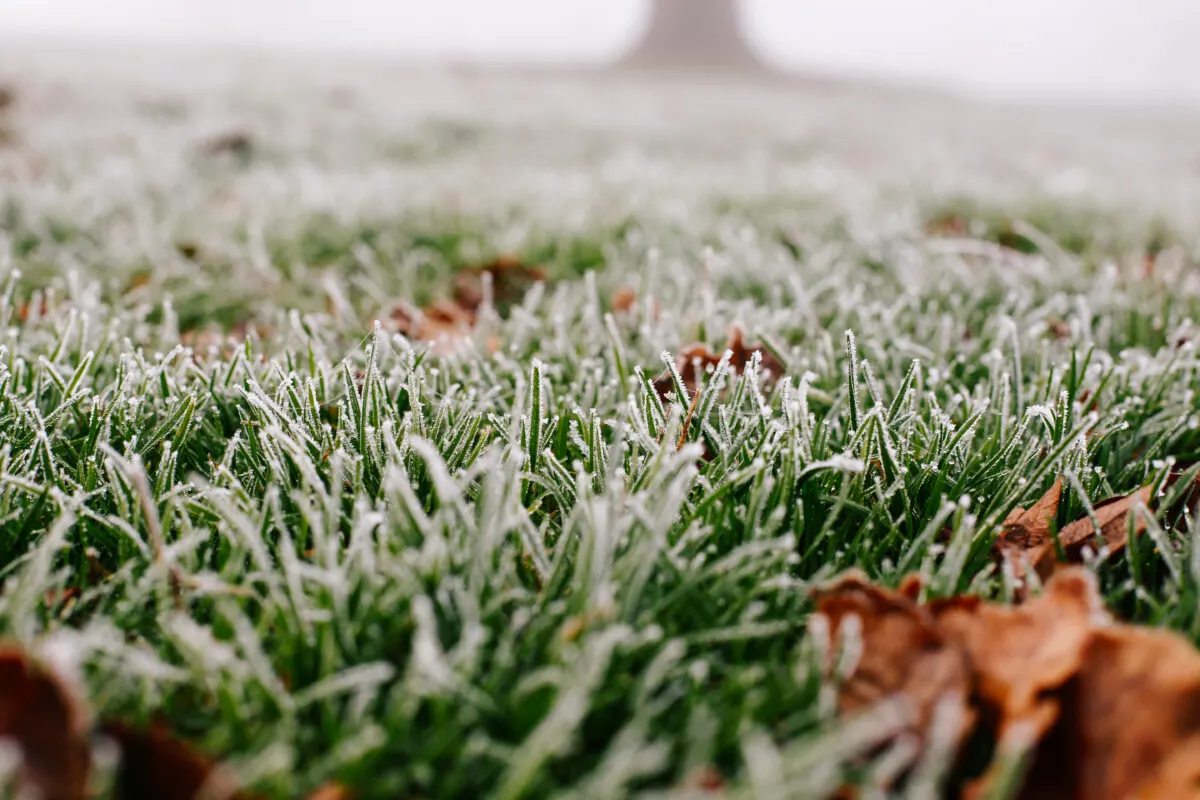
If you live in a more northern climate, you may be tempted to throw in the towel and stop mowing in the fall. But it’s better for your turf in the long run if you trim it right up until it enters dormancy.
When will it enter dormancy?
Turf will go dormant after the first hard frost. Until then, it will continue to grow, albeit much slower than in the summer. Letting the grass grow unchecked before cold weather can lead to fungal issues popping up and matting.
You’ll likely have to mow less frequently as the grass grows slower, but don’t stop until that first hard frost.
2. Gradually Shorten Your Mowing Height
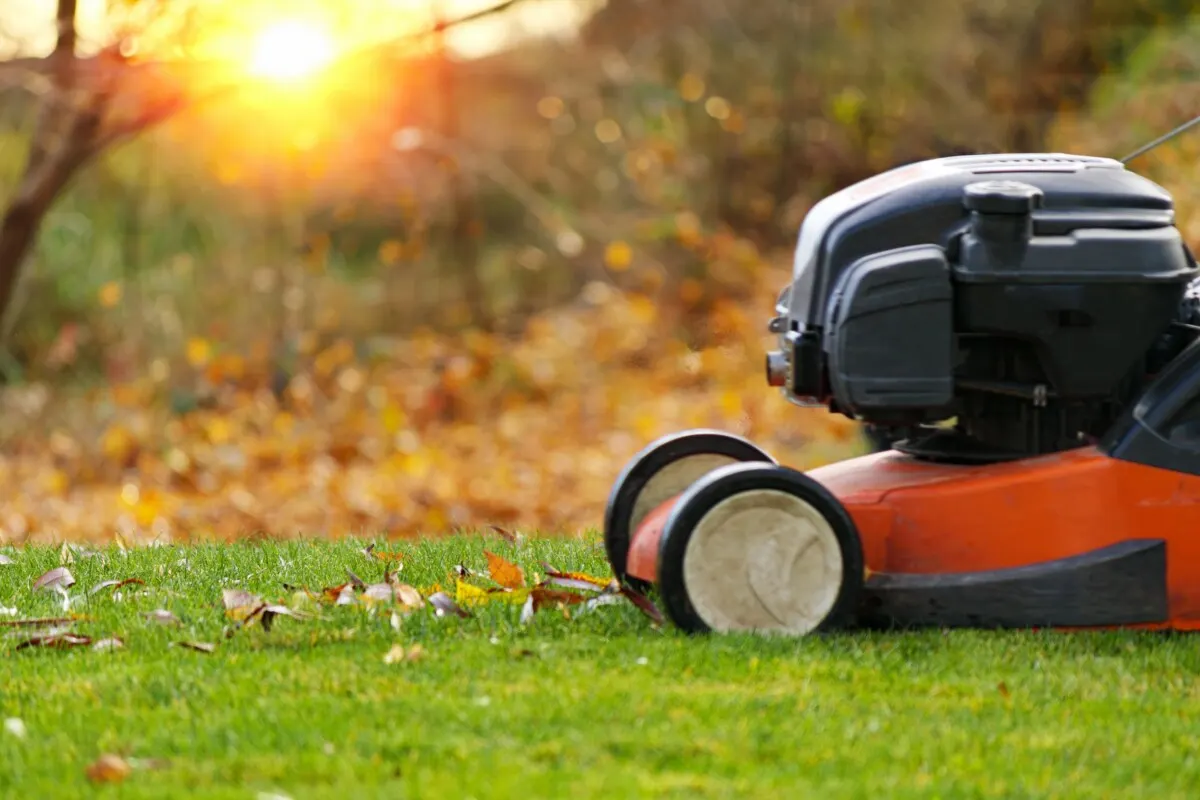
While you’re at it, you’ll need to change the height at which you mow. In the summer, when it’s hot, it’s recommended that you trim your grass no shorter than 3”. However, in the fall, you’ll want to slowly begin trimming your grass shorter until you’re down to 2.5”-1.5”.
If you live in a warmer climate, where you’ll still need to mow once or twice in the winter, stick to the higher end of that range; for more northern areas, aim for the shorter end by the time you stop mowing for the year.
Gradually trimming grass shorter as the weather cools will encourage it to send its roots deeper into the soil, allowing it to access water and nutrients more easily during the winter. You’ll have a healthier lawn next spring.
3. Don’t Let Leaves Rot in Place
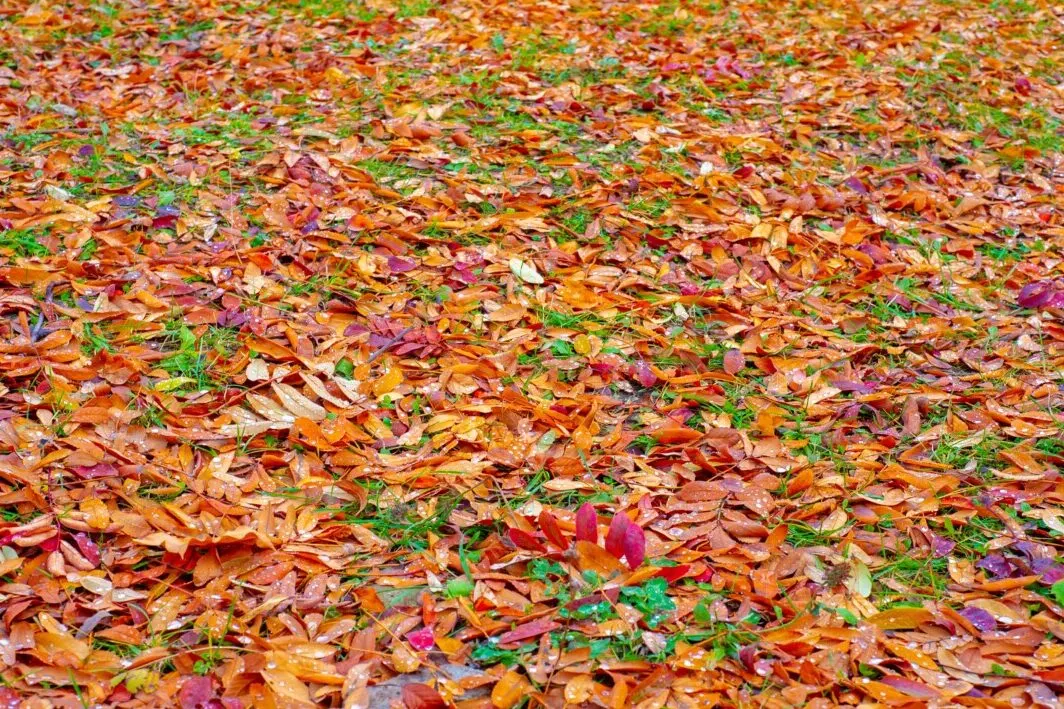
If you’ve got trees in your yard (or your neighbor has trees in theirs), you’ll have to deal with cleaning up leaves. As tempting as it may be to let the leaves sit on your lawn, it’s a recipe for disaster.
Leaves left to rot in place will block the turf beneath it from getting oxygen. Next spring, you’ll have dead spots in your lawn where areas of turf have died off, smothered by slowly rotting leaves.
Of course, you shouldn’t bag them up and put them in the trash, either. There are numerous things you can do with leaves around your yard.
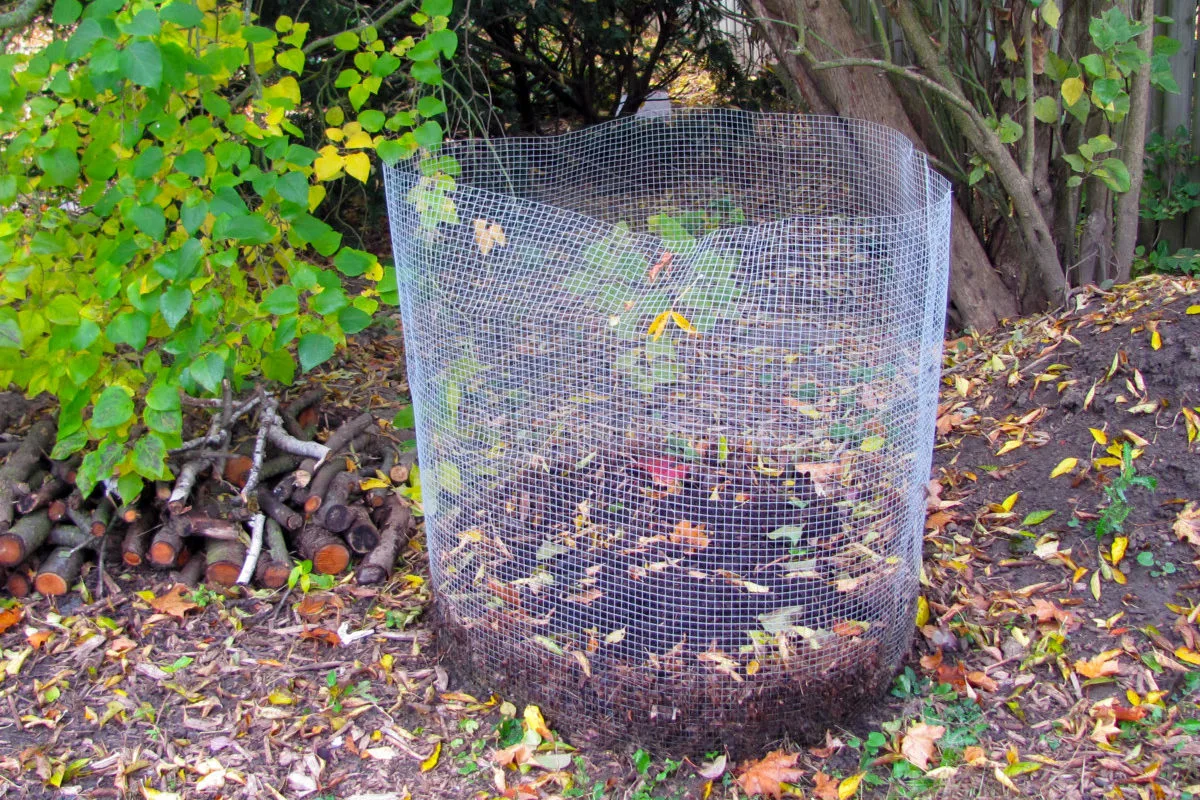
If you want to keep it simple, one of the best things you can do is mow over them. Make several passes to mulch them well into the turf. This way, they are shredded into much smaller pieces where they will break down quicker and do some good for your lawn.
4. Fertilize
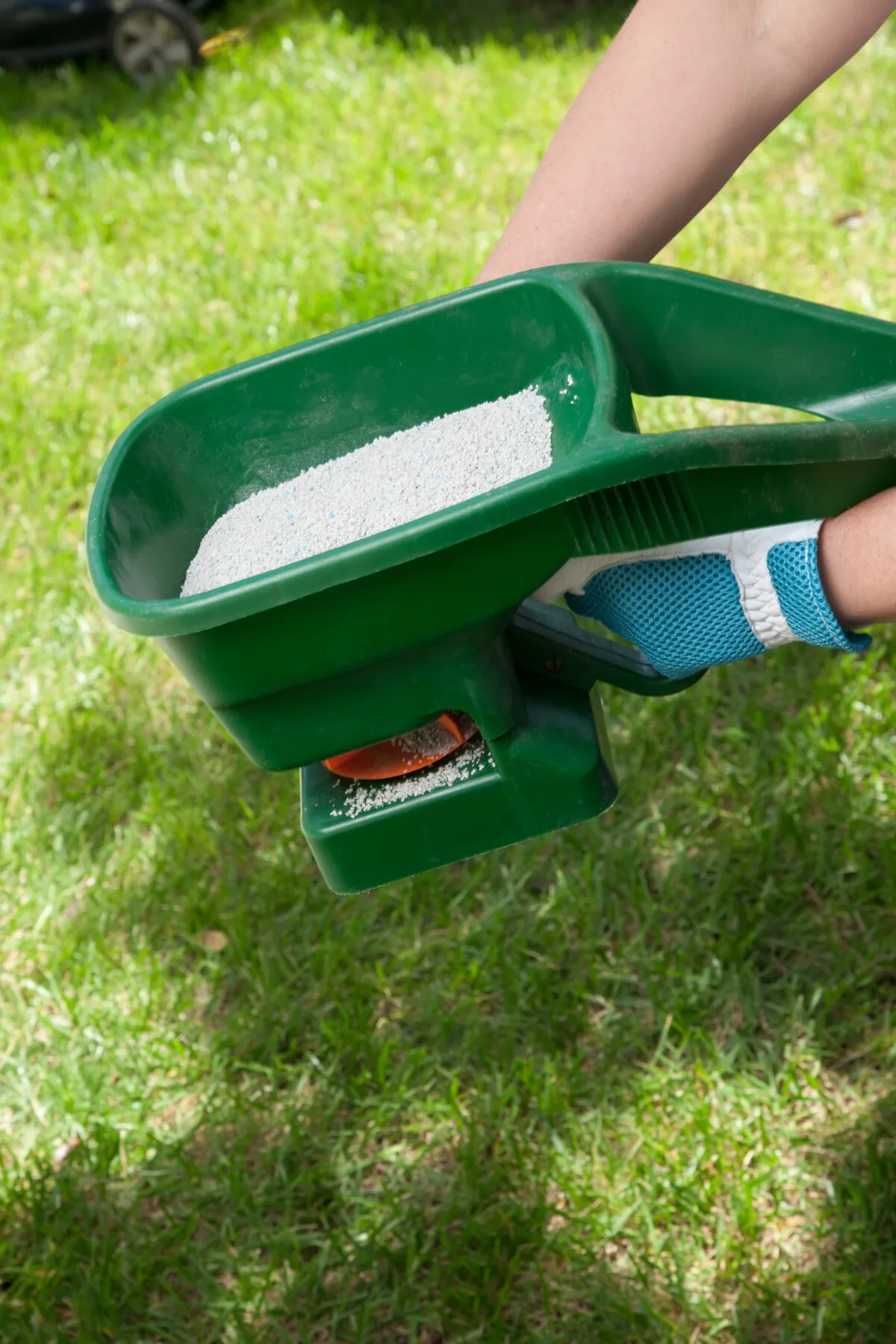
Now is the time to add a quick-release nitrogen fertilizer to your lawn – before it enters dormancy. This doesn’t have to be a complicated task. Just hit up your local garden center or big box home improvement chain. They all carry numerous lawn feeds specifically made to fertilize and prep your lawn for winter.
There are also organic options, including Espoma’s Organic Lawn Food Fall Winterizer.
These blends are meant to soak into the soil as the turf grass enters its winter dormancy. Plan to put winter fertilizer down shortly after your first hard frost. If you live in an area that doesn’t get cold winters, you should still apply a winterizing fertilizer in early November.
5. Seed Bare Spots
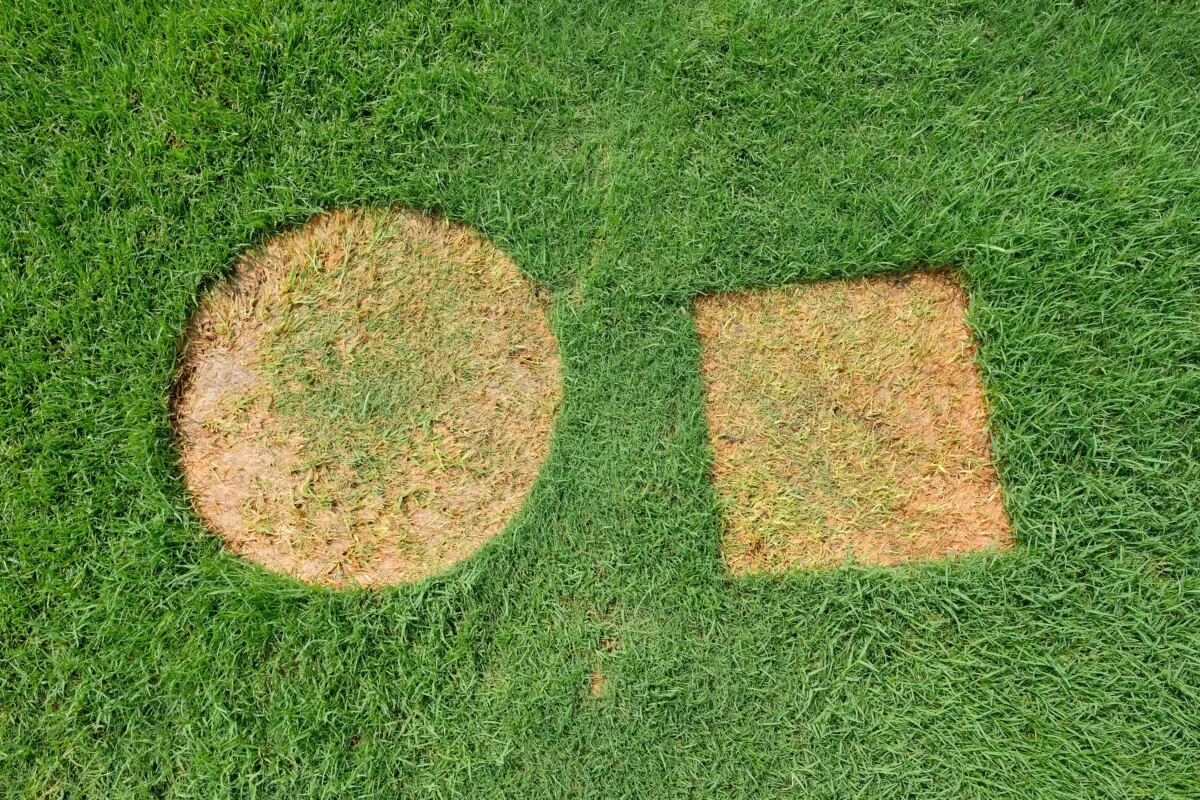
Maybe the dog has a favorite spot in the yard, or you left a piece of lawn furniture to sit in one place for too long. Whatever the reason, it’s not surprising to find a few bare spots in your yard towards the end of the season. Give these spots a little love before the cold weather sits in.
It’s recommended that cool-season grasses be overseeded this time of year, but we realize not everyone has the time or inclination to do so.
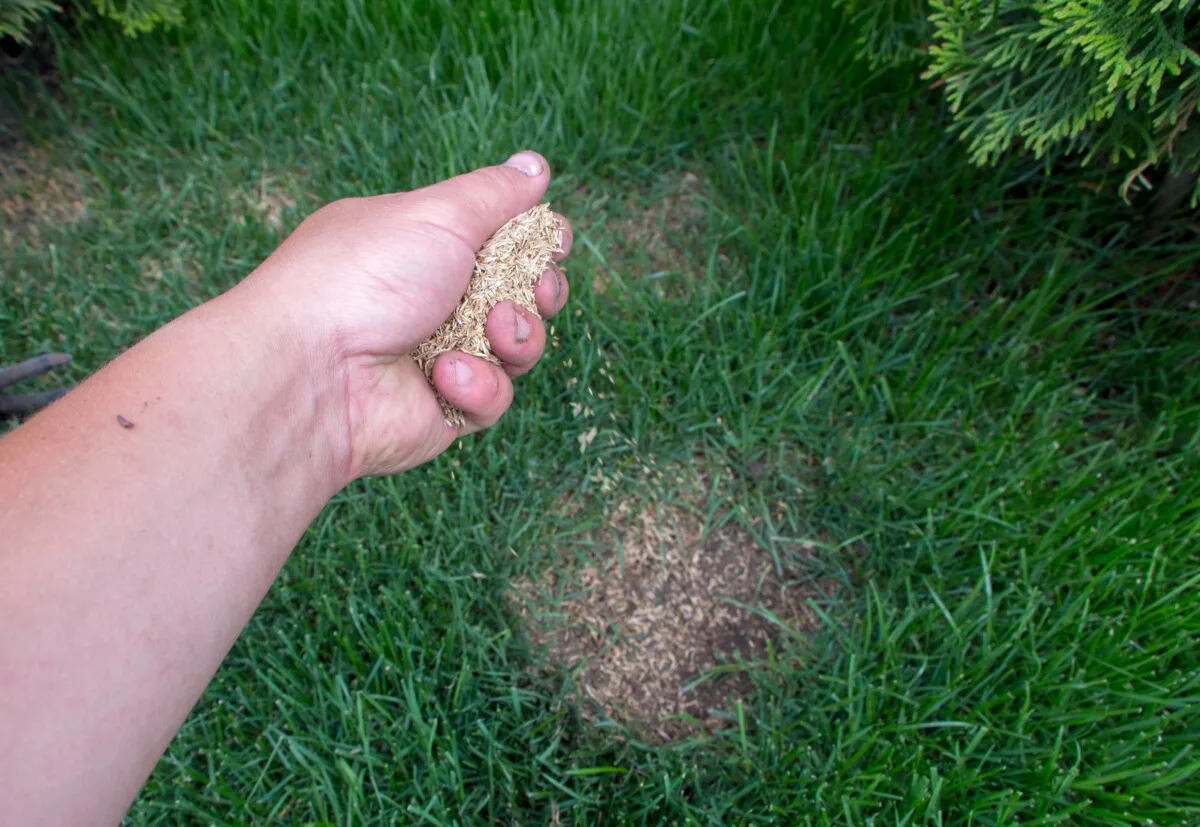
So, if overseeding your entire lawn falls on your “Could Care Less” list, at least take the time to reseed any bare patches well before your first frost date. This will allow the new turf plenty of time to establish before dormancy.
6. Put Away a Clean and Maintained Lawn Mower
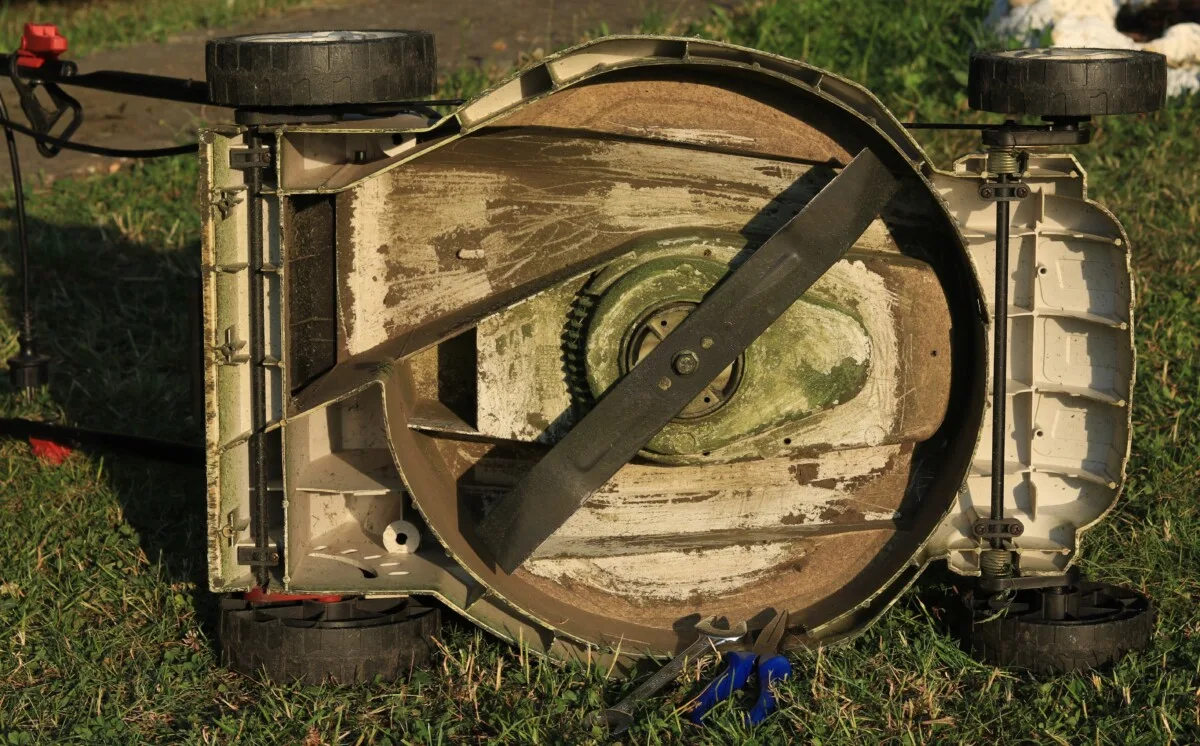
For those of us who aren’t weekend Lawn Warriors, it’s tempting to park our lawnmowers at the end of the season and forget about them. But that can lead to headaches and sometimes more money come spring when we need to use our mower for the first time.
After that final grass cutting, take a few extra moments to clean your lawnmower.
Lubricate any parts that need it, change the oil, and see to any repairs that might be needed, such as the bent mower blade from when you “found” that rock hiding in the tall grass.
If all of this sounds like a chore, hit up your local small engine repair shop for a proper prewinter tune-up. Come spring, when it’s time to mow the lawn, you’ll be glad you did.
7. Aerate Your Lawn
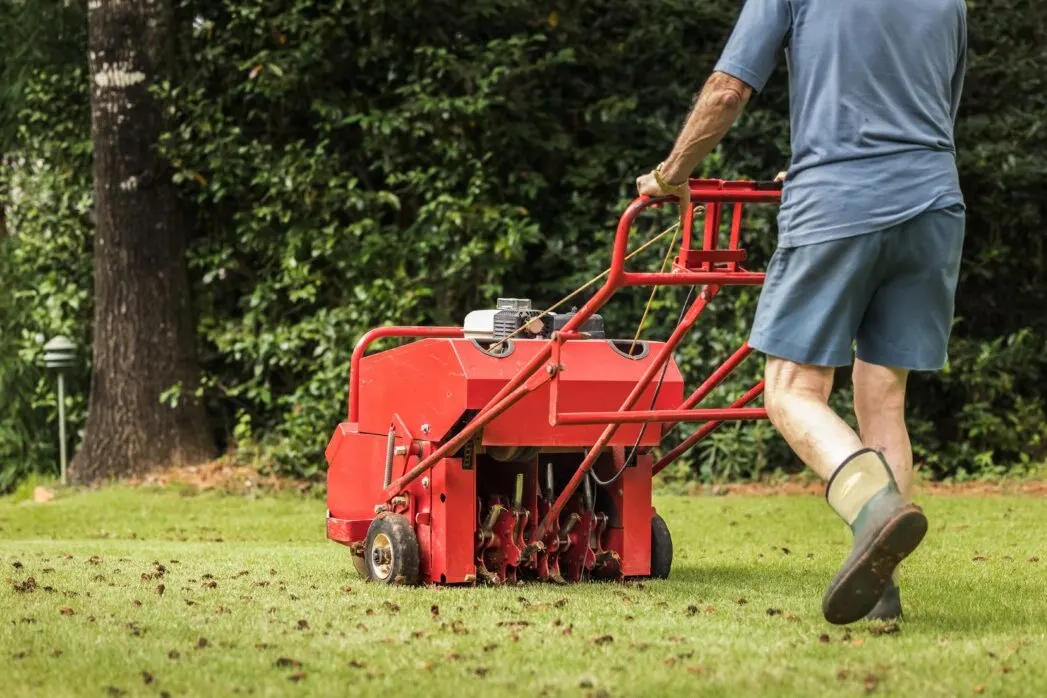
You get bonus points for this one. It’s a good idea to aerate your lawn every few years. Aerating turf helps get oxygen, nutrients and water deep into the soil. It also helps invigorate areas of high traffic, preventing soil compaction, which leads to much healthier grass overall.
There’s no need to buy an aerator.
You can borrow one from your Lawn Warrior Neighbor or rent one from a local hardware or home improvement store. And if this, too, falls on your “Could Care Less” list, you can always call a local landscaping business and have them do it for you.
And that’s that. You’ll be done in no time and save yourself a few headaches come springtime. And if you really want to reduce your time spent caring for your lawn, why not turn a patch into a wildflower lawn? Less mowing, more color and great for bees and butterflies. Here’s an article showing you how to do it.
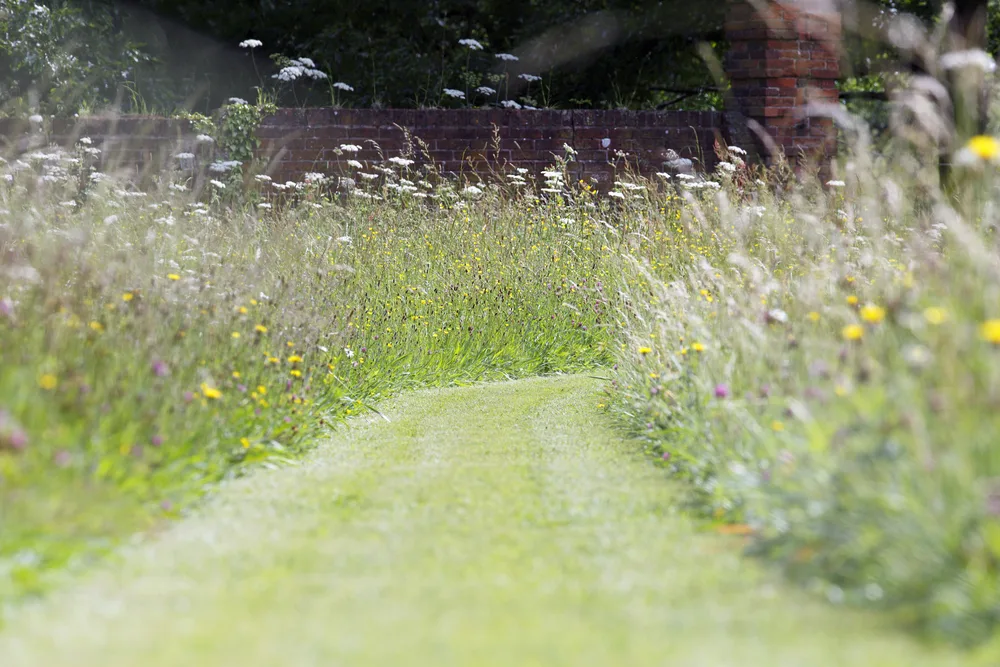
Related Reading:
Do You Have Moss Growing In Your Lawn? – Here’s What To Do
Reap The Benefits Of A Creeping Thyme Lawn

Get the famous Rural Sprout newsletter delivered to your inbox.
Including Sunday ramblings from our editor, Tracey, as well as “What’s Up Wednesday” our roundup of what’s in season and new article updates and alerts.

